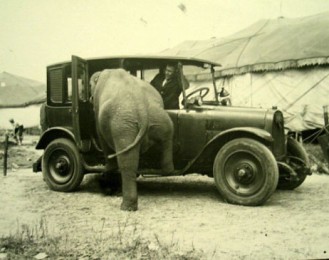 Chipmaker Nvidia introduced a $10,000 computer that it says will allow cars to learn the right and wrong reactions to different situations.
Chipmaker Nvidia introduced a $10,000 computer that it says will allow cars to learn the right and wrong reactions to different situations.
Basically they think it can work out what to do from experience rather than a rigid set of pre-defined situations. If this is applied to the roads of Italy this will mean that your car will never leave the garage and will simply quake with fear.
Jen Hsun Huang, CEO of Nvidia claimed that real driving is not about detecting but a skill of learned behaviour.
Talking to the company’s GTC 2015 conference in San Jose, Huang said his Drive PX computer was based on two of the company’s Tegra X1 processors and will crunch video from up to 12 cameras.
Over time the computer should learn, for example, to slow down for dogs and water buffalo crossing the road but not jam on the brakes for a coke can.
Today’s commercial autonomous systems are largely related to detecting when cars stray from their lanes or preventing collisions. Several fully self-driving cars have been developed as part of research projects, but they rely on highly detailed maps and are generally restricted to operating in controlled environments.
A DARPA project already proved the learning technology on a lower level, said Huang. A small autonomous robot was fed with 225,000 images of a backyard. When it started out, the robot ran straight into an obstacle, but after analyzing the images, it managed to successfully scoot around the yard without hitting objects, figuring out for itself how to get around.
While it is not really designed for the great unwashed, Nvidia thinks its Drive PX will find a home in the R&D departments of car makers.
One proponent of autonomous driving, Tesla Motors CEO Elon Musk, said the most difficult part of realizing the technology was at speeds between 10- and 50 miles per hour.
“It’s fairly easy to deal with things that are sub five or 10 miles per hour, you just make sure it hits nothing” said Musk, who was speaking alongside Huang at the event.
“From 10 to 50 miles per hour in complex suburban environments, that’s when you can get a lot of unexpected things happening. Once you’re above 50 miles per hour, it gets easier again.”
An additional element of Drive PX will ensure that actions learned in one car are shared with others, which should mean that cars will start to recognise bad drivers and get out of their way.
Nvidia didn’t say which auto makers would be using the platform, which will be available from May, but did say that it’s already receiving enquiries from car companies about the technology.





